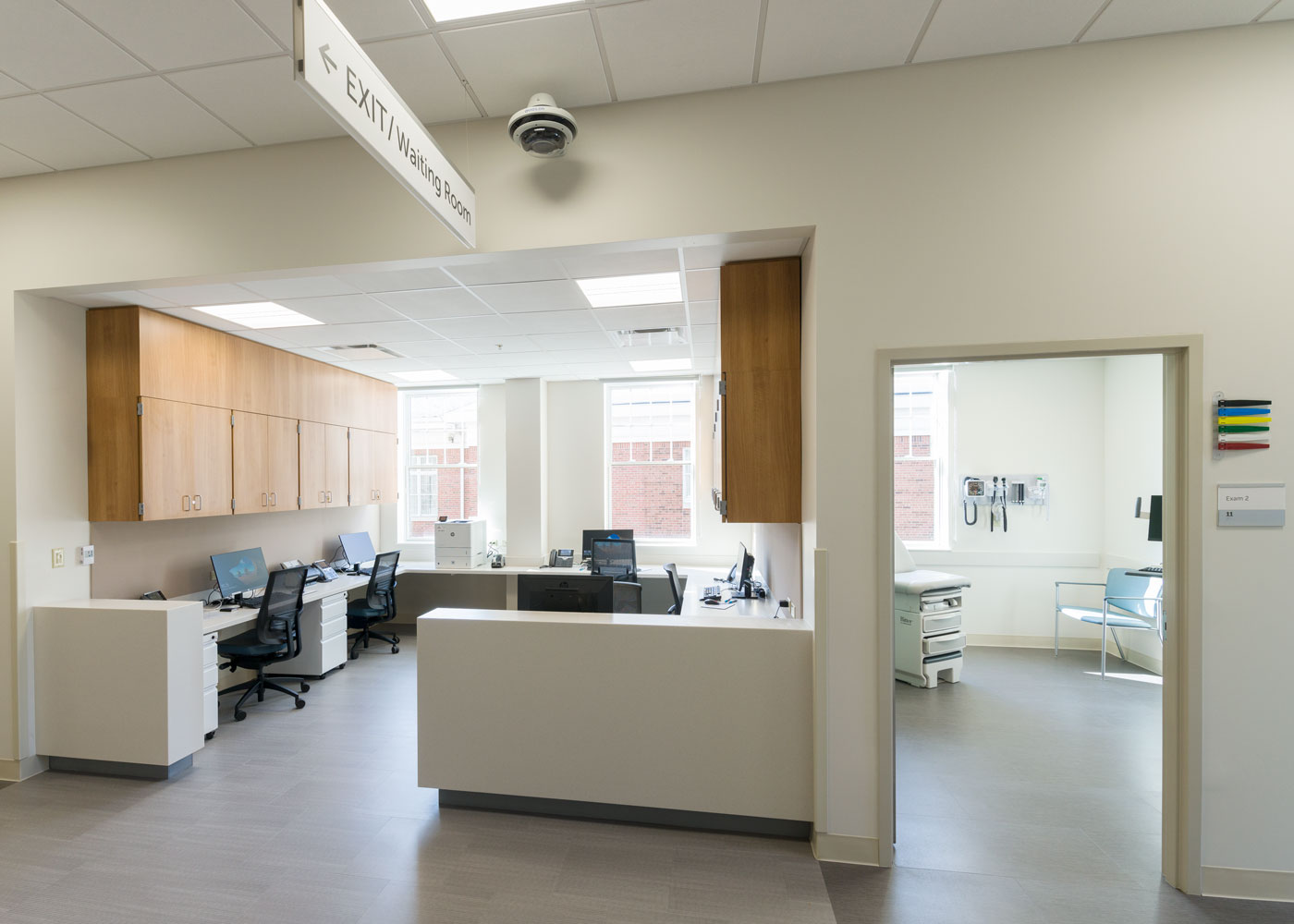The Significance of Urgent Care Centers in Bridging the Void Between Main Care and Emergency Situation Solutions
Urgent care facilities have actually arised as an important part of the health care landscape, efficiently addressing the critical demand for prompt medical interest without resorting to emergency situation solutions. The evolving function of urgent care centers elevates important inquiries about their combination within the wider health care system and the effects for individual outcomes and source appropriation.
Overview of Urgent Care Centers
Urgent care centers have ended up being an essential part of the healthcare delivery system, giving accessible medical services for non-life-threatening conditions. These facilities usually run outdoors basic workplace hours, offering clients an alternative to emergency clinic and main care settings. People looking for immediate treatment usually existing with concerns such as small injuries, infections, or diseases that require punctual attention but do not present an immediate threat to life or arm or leg.
Immediate care centers are staffed by a series of medical care professionals, consisting of physicians, registered nurse practitioners, and doctor aides, who are furnished to diagnose and treat different medical problems. They typically include diagnostic devices such as X-ray machines and lab solutions, allowing them to supply comprehensive treatment on-site.
The establishment of urgent care centers has been influenced by the increasing demand for timely clinical solutions in a fast-paced culture, where clients might battle to protect visits with primary care providers. Consequently, these facilities intend to ease blockage in emergency situation divisions, enhancing general medical care performance. Additionally, urgent treatment facilities frequently act as a bridge between key treatment and emergency services, guaranteeing that clients obtain appropriate treatment tailored to their particular medical demands.

Advantages of Urgent Care Solutions
Accessing prompt healthcare is a substantial benefit of immediate treatment solutions. These facilities give instant focus for non-life-threatening problems, successfully decreasing delay times contrasted to standard emergency departments. Patients looking for look after small injuries, illnesses, or urgent health and wellness issues can get treatment without the long hold-ups often associated with healthcare facility check outs.
One more secret advantage is the extensive hours of procedure. Numerous urgent care centers are open evenings and weekends, suiting people who may not have the ability to see their medical care supplier during conventional office hours. This versatility makes immediate care an accessible option for those with hectic routines or abrupt health and wellness concerns.
Additionally, urgent treatment centers frequently supply a variety of solutions, including analysis testing, X-rays, and basic lab services. This detailed approach allows for quick medical diagnosis and treatment, enhancing individual complete satisfaction.
In addition, immediate treatment centers are commonly a lot more cost-efficient than emergency situation rooms, making them an appealing option for individuals without insurance coverage or those with high-deductible strategies. On the whole, urgent treatment services play a critical duty in supplying available, timely, and budget-friendly healthcare.
Contrast With Medical Care
Normally, people often weigh their choices between urgent care centers and medical care service providers when seeking clinical focus. Both offer important functions in the health care system, yet they differ significantly in access, cost, and extent.
Health care carriers are generally the first point of contact for individuals, concentrating on long-lasting wellness administration, preventative care, and chronic disease administration. They supply connection of care, fostering a patient-provider connection that permits extensive health analyses and personalized treatment strategies. Nevertheless, setting up an appointment can be lengthy, typically needing days or weeks ahead of time.
In comparison, immediate care facilities provide prompt care for non-life-threatening problems that require punctual attention, such as minor injuries or infections. These centers frequently operate outside of typical workplace hours, accommodating people who might not have the ability to see their primary treatment supplier throughout normal organization times. Furthermore, urgent treatment is usually much more cost-effective than emergency situation area visits, making it an appealing alternative for those with minimal health care accessibility.
Inevitably, while immediate treatment centers and primary treatment service providers both contribute to person health and wellness, they provide to distinct needs, making it important for patients to identify which choice best lines up with their scenarios.
Emergency Situation Solutions Interaction
The communication between urgent care facilities and emergency situation solutions is an important aspect see here of the health care landscape, especially when patients deal with circumstances that might escalate in extent. Urgent care centers offer as a bridge in between health care and emergency departments, dealing with non-life-threatening conditions that require prompt attention. This partnership enhances person outcomes you can try this out and enhances source allocation within the healthcare system.
When people offer with immediate but not dangerous concerns, immediate care facilities can efficiently handle their needs, reducing blockage in emergency clinic. Facilities geared up with analysis capabilities can help with prompt references to emergency services when an individual's problem exceeds the extent of immediate care therapy. This seamless interaction assists make sure that patients obtain the ideal level of treatment without unnecessary hold-ups.
Additionally, effective communication in between immediate care providers and emergency solutions is critical. Sharing individual details and treatment histories cultivates collaborated treatment, decreasing the risk of repetitive tests and procedures. As medical care continues to evolve, the vibrant relationship in between urgent care centers and emergency services will certainly play a crucial function in enhancing patient care effectiveness, contentment, and total health outcomes within the area.
Future of Urgent Treatment Facilities
As healthcare needs advance, the future of immediate care facilities is positioned to come to be significantly important to the overall clinical environment (Urgent Care). These centers are likely to broaden their duties by including sophisticated modern technologies, such as telemedicine, man-made intelligence, and electronic wellness record combination. This will boost individual accessibility and enhance treatment sychronisation in between urgent treatment, health care, and emergency situation services
In addition, immediate care centers are expected to diversify their service offerings to include preventative care and chronic condition management. This change will certainly position them as important elements in managing populace wellness, decreasing the worry on emergency departments, and dealing with gaps in medical care accessibility.
The growing pattern of value-based treatment will better speed up the transformation of urgent treatment facilities, motivating them to concentrate on individual outcomes and complete satisfaction. Facilities may also take on collective technique models, functioning closely with specialists and health care carriers to make certain thorough client monitoring.
Final Thought
To conclude, urgent treatment facilities offer a vital function in click to find out more the health care system by offering instant accessibility to therapy for non-life-threatening conditions, successfully alleviating pressure on emergency situation services. Their prolonged hours and varied variety of solutions improve client benefit and contentment, while likewise ensuring suitable treatment distribution. As medical care needs remain to advance, the duty of urgent treatment centers will likely end up being significantly substantial, more connecting the gap between key treatment and emergency solutions.
The facility of immediate care centers has actually been influenced by the raising need for timely medical solutions in a busy culture, where clients may have a hard time to protect appointments with primary treatment companies. In addition, immediate treatment centers typically serve as a bridge in between primary treatment and emergency situation solutions, guaranteeing that clients get ideal care tailored to their certain clinical demands.
Lots of urgent care facilities are open evenings and weekend breaks, suiting patients that might not be able to visit their main treatment supplier during conventional office hours (Urgent Care). As healthcare proceeds to progress, the dynamic connection between urgent care facilities and emergency solutions will play an essential function in enhancing individual care effectiveness, fulfillment, and total health and wellness results within the area
